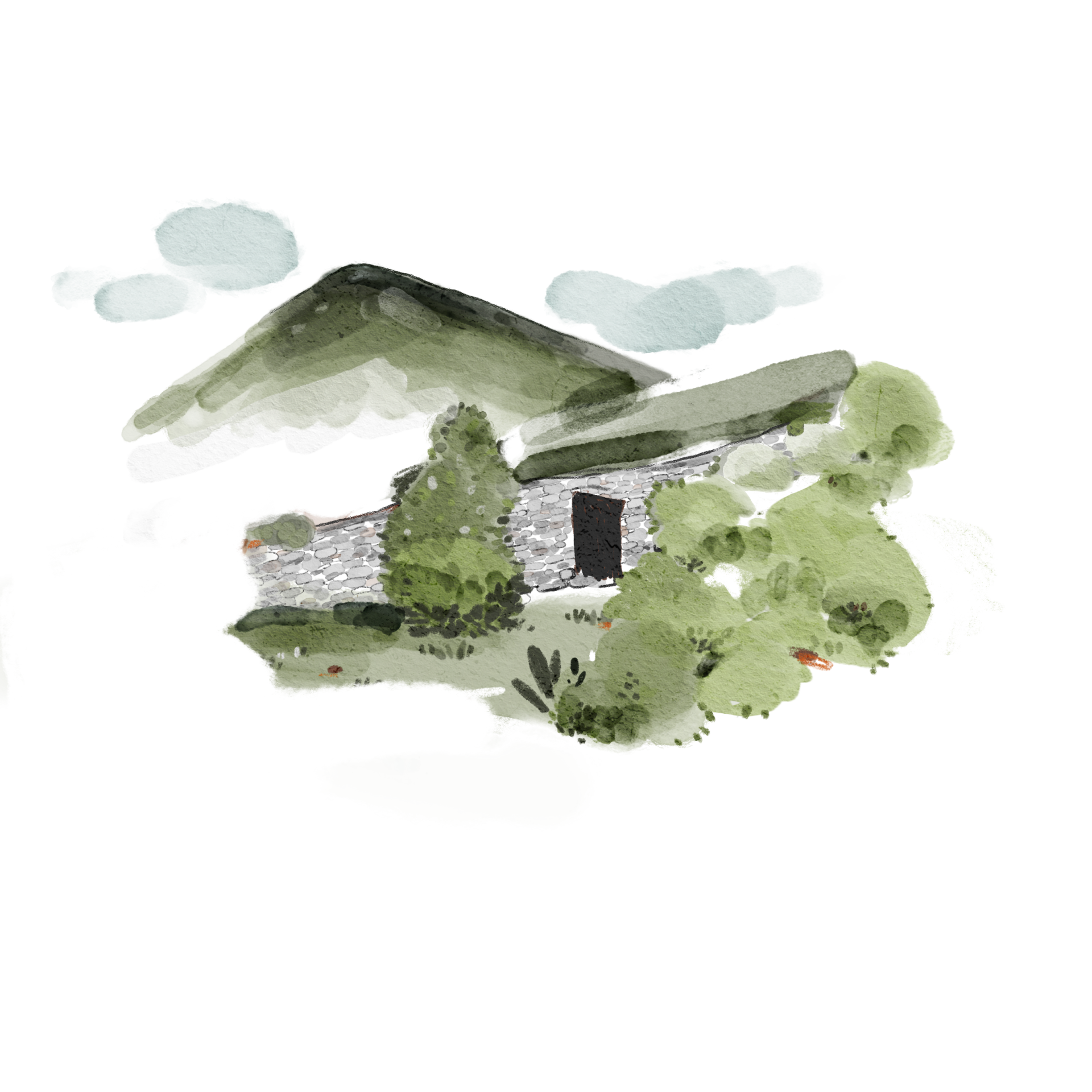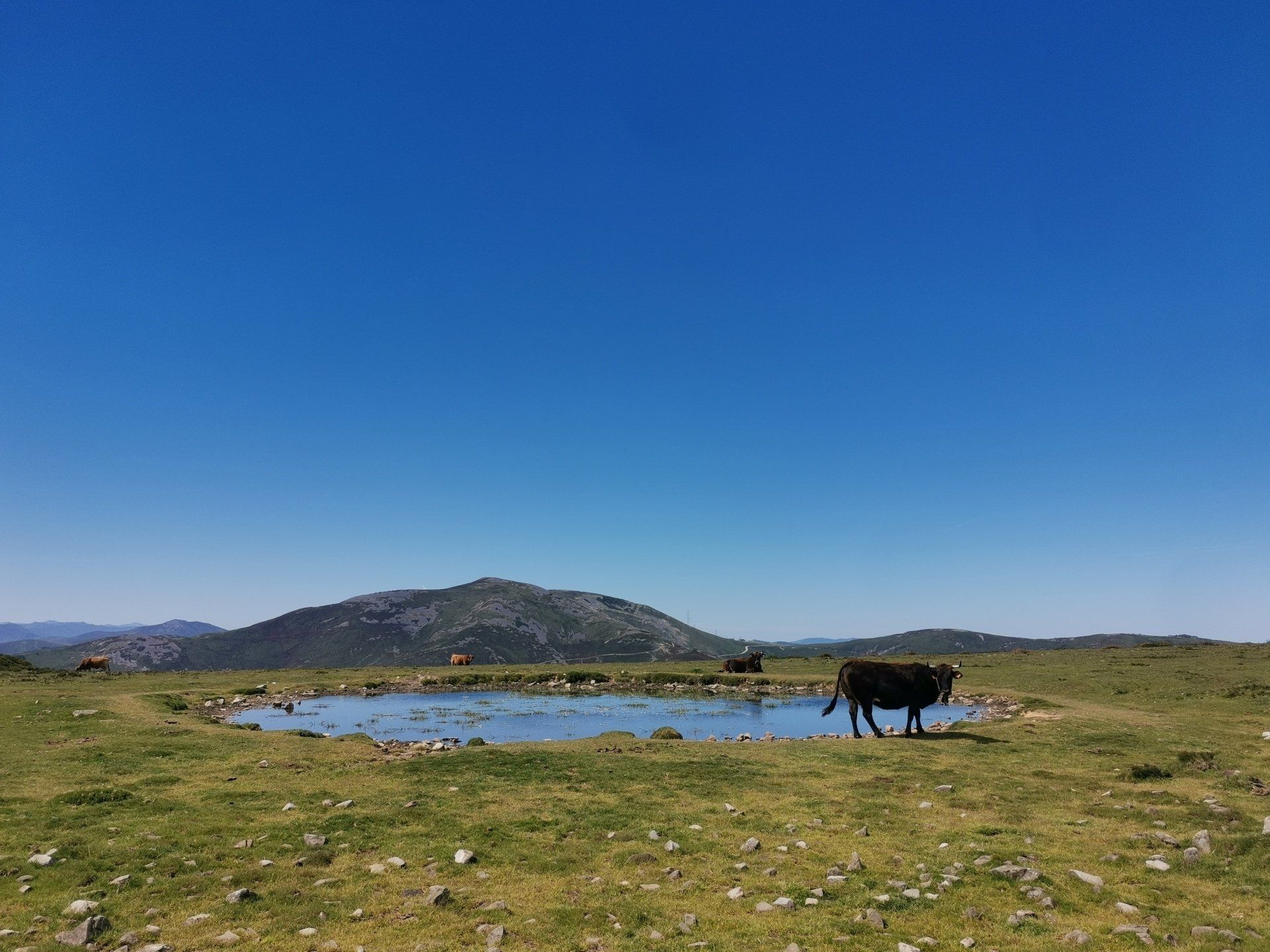Standing at the milestone of the first stop we come across (Alto de la Portiella), leaving Pico Caborno to our right, which we have just skirted, and looking northwest we can make out the meadows of Besapié, one of the three brañas vaqueiras that populated this mountain range and that today are practically uninhabited.
The forgotten path: The historic route of Los Hospitales
It is little known that in the fifth stage of the road there is a hidden passage that will guide all pilgrims and walkers to discover the ruins where transhumants and Romans traveled centuries before.
The forgotten path: The historic route of Los Hospitales
It is little known that in the fifth stage of the road there is a hidden passage that will guide all pilgrims and walkers to discover the ruins where transhumants and Romans traveled centuries before.

From Colinas de Arriba we have two options to continue the path, considering the next stage ending in Berducedo:
- By Pola de Allande (28 km)
- By Hospitals (21 km).
If you choose Los Hospitales, the path that starts from the hostel connects with the one that comes from La Mortera in 1.2 km.
This is a well-signposted and feasible route for any walker of average physical condition, just be aware of the weather and carry the appropriate equipment.

From Colinas de Arriba we have two options to continue the path, considering the next stage ending in Berducedo:
- By Pola de Allande (28 km)
- By Hospitals (21 km).
If you choose Los Hospitales, the path that starts from the hostel connects with the one that comes from La Mortera in 1.2 km.
This is a well-signposted and feasible route for any walker of average physical condition, just be aware of the weather and carry the appropriate equipment.
Regarding the Los Hospitales route, in addition to assuming 7 km less, we avoided descending to 524 meters of altitude and then ascending to 1132 meters from Puerto del Palo; we dispense with roads and enjoy the attractive landscape that ranges from the Picos de Europa to Galicia, passing through the Cantabrian Mountains and the Cantabrian Sea

Regarding the Los Hospitales route, in addition to assuming 7 km less, we avoided descending to 524 meters of altitude and then ascending to 1132 meters from Puerto del Palo; we dispense with roads and enjoy the attractive landscape that ranges from the Picos de Europa to Galicia, passing through the Cantabrian Mountains and the Cantabrian Sea

The hospitals
Ruin of the Hospital of Valparaiso
This route, based on the ancient Roman road used to exploit the gold mines of these mountain ranges (they can still be seen), owes its name to the four hospital foundations for pilgrims located between its peaks. This highlights the complications that the ancient pilgrims had to face in the harsh winters of the area.
We can distinguish up to 4 ruins:
- Hospitals of Paradiella (VX century), of which only a few stones remain. It had its own chapel.
- Hospitals of Fonfaraón (13th century), converted into a cattle shed. It also had a chapel. In 1918 it was still active: "It was still attended by a woman, who through the meager daily wage of one peseta, gave shelter to walkers in a small room, where there was only a hearth with benches around it.".
- Hospitals of Valparaiso (thirteenth century). It had its own chapel.
- Freita Hospitals, already in the port of Palo and active until the 18th century.
Already between the 14th and 15th centuries, new routes began to be traced that reached the current Pola de Allande in order to avoid these passes, especially in the face of winter. Starting in the 19th century, the current roads were also traced with a similar itinerary, leaving this iconic route of the Hospitals for grazing and the occasional pilgrim who still used it at that time.
The hospitals
Ruin of the Hospital of Valparaiso
ANDhis route, based on the ancient Roman road used to exploit the gold mines of these mountain ranges (they can still be seen), owes its name to the four hospital foundations for pilgrims located between its peaks. This highlights the complications that the ancient pilgrims had to face in the harsh winters of the area.
We can distinguish up to 4 ruins:
- Hospitals of Paradiella (VX century), of which only a few stones remain. It had its own chapel.
- Hospitals of Fonfaraón (13th century), converted into a cattle shed. It also had a chapel. In 1918 it was still active: "It was still attended by a woman, who through the meager daily wage of one peseta, gave shelter to walkers in a small room, where there was only a hearth with benches around it.".
- Hospitals of Valparaiso (thirteenth century). It had its own chapel.
- Freita Hospitals, already in the port of Palo and active until the 18th century.
Already between the 14th and 15th centuries, new routes began to be traced that reached the current Pola de Allande in order to avoid these passes, especially in the face of winter. Starting in the 19th century, the current roads were also traced with a similar itinerary, leaving this iconic route of the Hospitals for grazing and the occasional pilgrim who still used it at that time.
Some names and hidden corners of the route
Some names and hidden corners of the route


Standing at the milestone of the first stop we come across (Alto de la Portiella), leaving Pico Caborno to our right, which we have just skirted, and looking northwest we can make out the meadows of Besapié, one of the three brañas vaqueiras that populated this mountain range and that today are practically uninhabited.



